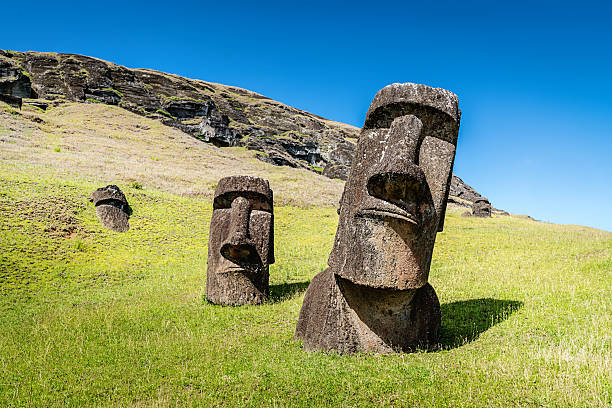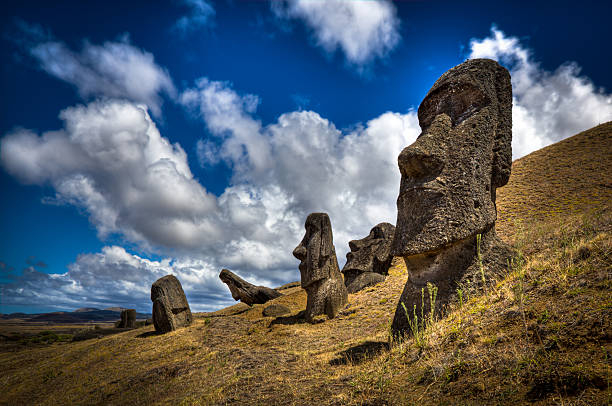Moai Statues
The Moai Statues on Easter Island in Polynesia are famous, with the largest weighing more than 80 tonnes. In fact, even if you've never heard of them, you'll probably be able to identify them from a photograph. Between 400 and 1500 AD, the Rapa Nui people sculpted these more than 800 figures from volcanic ash, the most of which look away from the sea. Each of these massive monolithic figures would have taken close to a year to construct and was probably built using crude basalt stone picks. There are a number of hypotheses as to why they were constructed, including the idea that it would enhance the soil and serve as a method to memorialize significant clan ancestors.
When Europeans arrived on the island for the first time in 1722, the statues were still observing their clan territories from inland, but by the late 19th century, all of them had toppled. In the late 18th and early 19th centuries, the moai were destroyed, probably as a result of interaction with Europeans or internal tribal conflicts. It is regarded as a tremendous artistic and physical achievement that more than 900 sculptures could be produced and transported. The Paro moai, the highest one ever built, was about 10 meters (33 feet) high and weighed 82 tonnes (80.7 tons). The tallest and heaviest moai built was at Ahu Tongariki and weighed 86 tonnes (84.6 tons).
Location: Easter Island

















